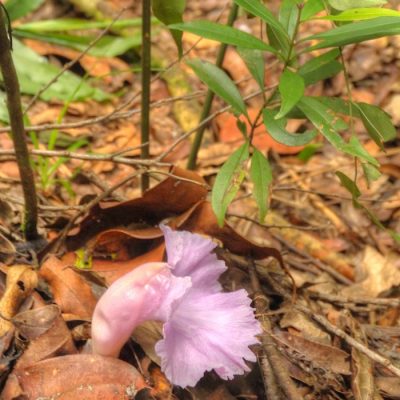Scientists have made public their discovery of a new black ginger species, an endemic species of Vietnam.
The new ginger species is named Distichochlamys benenica Q.B. Nguyen & Škorničk. It was discovered by Vietnamese and Singaporean scientists in the Ben En National Park in the central province of Thanh Hoa in April 2011.
The new ginger species is named Distichochlamys benenica Q.B. Nguyen & Škorničk. It was discovered by Vietnamese and Singaporean scientists in the Ben En National Park in the central province of Thanh Hoa in April 2011.

Dr. Nguyen Quoc Binh, a member of the research group, said this is the fourth species of Distichochlamys black ginger in Vietnam.
Earlier, the first black ginger species was found out at the Bach Ma National Park in the central province of Thua Thien-Hue in 1995, the second in the Central Highlands province of Gia Lai in 2001 and the third at the Cuc Phuong National Park in the northern province of Ninh Binh in 2003.
Dr. Binh said that the standard specimen of the newly-discovered species is now preserved at the Vietnam Nature Museum.
“Black ginger is considered the endemic species of Vietnam because it has never been found in any country in the world, even in Vietnam’s neighboring countries like China, Laos and Cambodia,” Binh stressed.
Zingiberaceae are a family of flowering plants consisting of aromatic perennial herbs with creeping horizontal or tuberous rhizomes, comprising of about 52 genera and more than 1300 species, distributed throughout tropical Africa, Asia, and the Americas.
Members of the family are small to large herbaceous plants with distichous leaves with basal sheaths that overlap to form a pseudostem. The plants are either self-supporting or epiphytic. Flowers are hermaphroditic, usually strongly zygomorphic, in determinate cymose inflorescences, and subtended by conspicuous, spirally arranged bracts.
The perianth is composed of two whorls, a fused tubular calyx, and a tubular corolla with one lobe larger than the other two. Flowers typically have two of their stamenoids (sterile stamens) fused to form a petaloid lip, and have only one fertile stamen. The ovary is inferior and topped by two nectaries, the stigma is funnel-shaped


 Tiếng Việt
Tiếng Việt